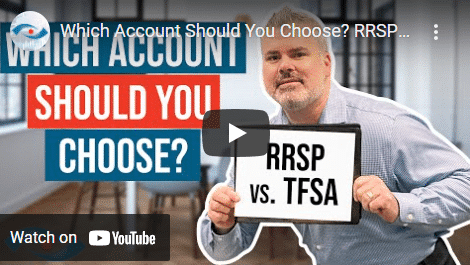If you’re 18 in a low tax bracket and only have $2,000 to contribute, where should you put it?
A few weeks ago, we posted a video on the channel where I shared a fictional story that hammered home the benefits of starting to invest young. The effects of compounded tax-sheltered growth can truly be significant over time. In that story, we focused on an RRSP as the account type. The goal was to encourage early investment and we didn’t want to get too far into the weeds on other types of tax advantage plans. On one social platform, an experienced and successful financial advisor loved the video and gave us a thumbs up. Mission accomplished.
He even offered a suggestion for a follow-up video. The team thought it was a great idea so we ran with it. In our fictional story, Jack started contributing to his RRSP at age 18. Now I know that age doesn’t necessarily translate to income, but if he’s only 18 it’s probably fair to assume that he would be in a low tax bracket. If that’s true, is an RRSP really the best option for Jack? What do you think? Let’s explore this a little further.
If you’re not sure what RRSPs are or how they work, be sure to check out the Complimentary 19 video series titled Learn the Basics of Investing on the SeeWhy YouTube channel, where you will learn that and more. In this video, I’m going to fill out a T chart highlighting some key differences between a registered retirement savings plan and a tax-free savings account. We’ll start with RRSPs.
Number one, there is technically no minimum age to contribute to an RRSP. Number two RRSP contribution room is earned based on certain types of income, such as employment income and rental income. Number three, contributions are tax-deductible resulting in immediate tax savings. Depending on your tax rate, this can be a very attractive feature. But if you’re in a low tax bracket, not so much. And finally, number four, income earned within an RRSP is tax-sheltered, but that doesn’t mean it’s tax-free.
The money is sheltered from tax while it is within the RRSP, but when a withdrawal is made, the full withdrawal is considered income and is taxed at your marginal tax rate. That part’s not so nice. What about TFSAs? Number one, the minimum age limit to contribute to a TFSA is 18 years old. Number two, two contribution room is not earned. It’s the same for everyone 18 years of age or older. For example, for the 2022 year, the contribution limit is $6,000. Number three contributions are not tax-deductible. This feature is worse than an RRSP. But number four, income earned within its TFSA is completely tax-free. This feature is better than an RRSP.
So if you’re 18 in a low tax bracket and only have $2,000 to contribute, where should you put it? Now, RRSPs are great, but I’d say that if you’re in a really low tax bracket, a good argument can be made to forego the tax deduction associated with an RRSP contribution altogether and contribute to a tax-free savings account instead. That way, everything from this day forward is tax-free, including the eventual withdrawal.
Every situation is different and there is always many, many factors to consider. So be sure to seek the guidance of a qualified financial advisor.

Recent Videos

Monetary & Fiscal Policy Part 2

Monetary & Fiscal Policy






